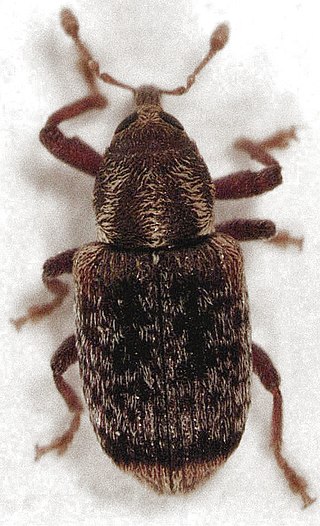
Peristoreus is a weevil genus native to New Zealand. This genus was first described in 1877 by Theodor Franz Wilhelm Kirsch.
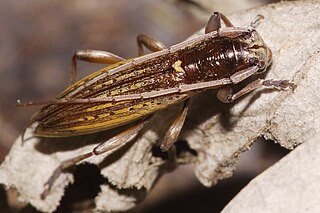
Xylotoles is a genus of flat-faced longhorns in the beetle family Cerambycidae. There are more than 15 described species in Xylotoles found mainly in New Zealand, Australia, and surrounding islands.

Mecodema is a genus of large flightless ground beetle (Carabidae) endemic to New Zealand. The genus is very diverse in comparison to the other three New Zealand genera within the subtribe Nothobroscina. Mecodema is geographically widespread across both the North and South Islands, as well as numerous offshore islands, including the Three Kings Is., Poor Knights Is., Aotea and Hauturu, Kapiti Is., Stephens Is., Stewart Is., Chatham Is., Snares Is.

Chaetosomatidae is a small family of beetles, in the superfamily Cleroidea. There are three extant genera, two of which are endemic to New Zealand with the other (Malgassochaetus) native to Madagascar. Members of this family are predaceous on wood-boring insects.
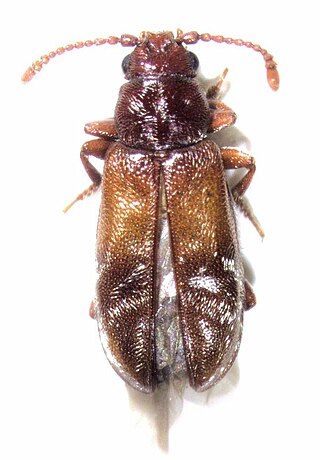
Cavognathidae is a family of beetles, in the superfamily Cucujoidea. It contains a single genus, Taphropiestes with around a dozen species known from South America, Australia and New Zealand. In Australian and New Zealand species adults and larvae have been found living in bird nests, but their ecology is unclear, but they are possibly scavengers.
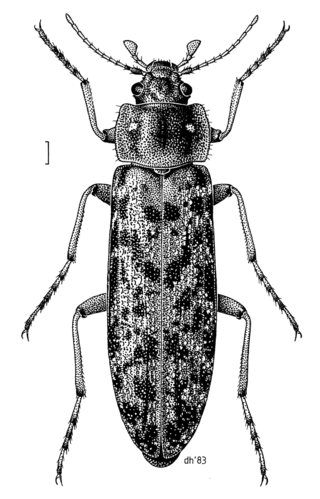
The Chalcodryidae are a family of beetles in the superfamily Tenebrionoidea. It contains at least five species in two genera Chalcodrya and Philpottia, which are endemic to New Zealand. They are generally found associated with moss or lichen covered branches, with the larvae having been found to be associated with dead twigs. They are likely noctural, feeding on lichen and other plant material at night. The genera Sirrhas and Onysius, formerly placed in this family, have subsequently been transferred to Promecheilidae.

Gaioxenus is a genus of beetles in the family Carabidae. Gaioxenus pilipalpis is the only species in the genus. This genus and species was first described by Thomas Broun in 1910. Broun based the descriptions on specimens he collected in Raurimu in the Manawatū-Whanganui region of New Zealand. Gaioxenus pilipalpis is endemic to New Zealand.

Parabaris is a genus in the ground beetle family Carabidae. There are at least three described species in Parabaris, found in New Zealand.

Holcaspis is a genus of beetles in the family Carabidae, endemic to New Zealand.

Megadromus is a genus in the beetle family Carabidae. There are at least 30 described species in Megadromus, found in New Zealand.

Neoferonia is a genus in the ground beetle family Carabidae. There are about nine described species in Neoferonia, found in New Zealand.
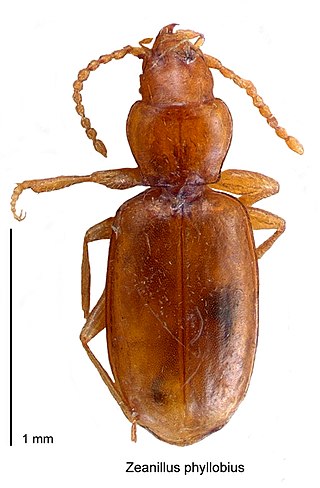
Zeanillus is a genus of ground beetles in the family Carabidae. There are about 10 described species in Zeanillus, found in New Zealand.

Oopterus is a genus in the beetle family Carabidae. There are more than 20 described species in Oopterus, found in New Zealand.

Zolus is a genus of carabids in the beetle family Carabidae. There are about six described species in Zolus, found in New Zealand.

Mitophyllus is a genus of large stag beetles endemic to New Zealand.

Chalcolampra is a genus of leaf beetles. These beetles are widespread from Southeast Asia to Australia and New Zealand, but most common in the southeast of Australia. There are approximately 25 Australian species within this genus. There are also 13 species described from New Zealand, with up to an additional 20 undescribed species from the South Island.
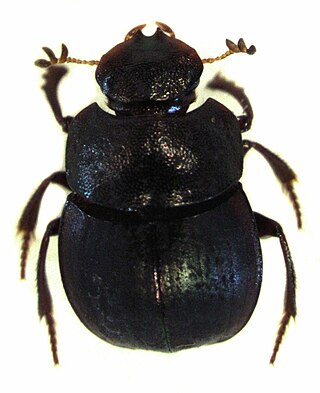
Saphobius is a genus of dung beetles in the tribe Deltochilini of the subfamily Scarabaeinae. They are endemic to New Zealand, with Saphobius edwardsi being most widespread. They are small in size, flightless, forest dwelling and nocturnal, which is unusual for dung beetles.
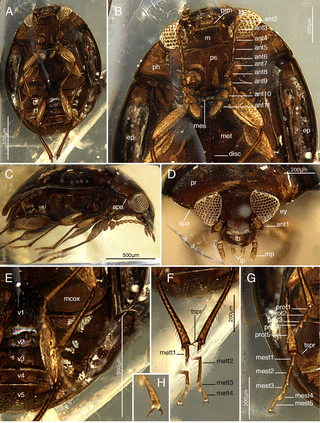
Cyclaxyridae are a family of beetles in the superfamily Cucujoidea. The only living genus is Cyclaxyra, with two species endemic to New Zealand. Other species have been named from fossils. They are also known as sooty mould beetles due to the association of Cyclaxyra with sooty mould. The extant species are mycophagous, feeding on spores, conidia, and hyphae.

Eucolaspis is a genus of leaf beetles in the subfamily Eumolpinae. It is native to New Zealand, where it is a serious pest of apple trees and other fruit crops. The genus has also been reported from Fiji.

Spilotrogia is a genus of flat-faced longhorns in the beetle family Cerambycidae. There are at about six described species in Spilotrogia, found in New Zealand.



















